
SPECIAL SUPPLEMENT TO THE MITCHELL REPUBLIC • OCTOBER 2022 SPREAD THE Hope, FIND THE Cure.
By Cassie Williams Mitchell Republic
MITCHELL – Cancer. It’s an uncomfortable word for most. Chances are, if asked, someone knows a person has had it or is battling through it.
It happens to other people, we all think. It won’t happen to me.
But we couldn’t be more wrong.
According to Jason Jones, a Breast Medical Oncol ogist from the Avera Cancer Institute out of Mitch ell, one out of eight women will develop breast cancer in their lifetime, and, of that, around 20% of women who are diagnosed with breast cancer have a known genetic mutation.


“Many patients will not have a family history,” Jones said.
Breast cancer occurs when the breast tissue cells begin to grow out of control. It can start in one or both breasts and can occur for women and, although rare, men. Breast can cer can also spread to other parts of the body via cancer cells infiltrating the body’s bloodstream or through the lymphatic system.
While treatments vary depending on how inva sive the cancer is, early detection is key to how successful of a survival rate an individual has. According to Avera, patients have a higher chance of survival if a doctor finds and treats the cancer early, when it’s small and hasn’t spread.
While some forms of breast cancer are incredibly hard to treat and have very poor remission rates, such as metaplastic breast cancer or lymphoma of the breast, some forms of breast lumps are benign – which just means it’s not a threat – and very common.
The most common breast cancers are what are known as carcinomas, according to the ABCS. The most common types of breast cancer, ductal carci noma in situ and invasive carcinoma, are known as
adenocarcinomas, which are big, doctor words that basically just mean that the cancer started in the milk ducts or lobules.
What’s Inside Mitchell doctor: Best form of treatment is prevention

However, there are different types of cancer that grow in the breast – such as an angiosarcoma or a sarcoma – that aren’t considered breast cancer since they grow in a different part of the breast.
To Jones, the best form of treatment for breast cancer is prevention.


“Many advances are being made in the treat ment of breast cancer. Over 88% of patients who are diagnosed with breast cancer will be long term survivors,” Jones said. “That being said, lifestyle choices such as diet and exercise in order to maintain a healthy body weight help prevent (breast cancer). The key to success is screening and diagnosing the disease early. It is important for patients to work with their primary care provider in order to make sure screening is up to date.
Finding the cancer early allows for more treat ment options, so by doing regular self-exams, keeping up-to-date with annual mammograms and informing your doctor of any sudden chang es in bodily function, the chances of surviving increase by over 90%.

What makes breast cancer different from treat ing other cancers? To Jones, the treatment process is one of the most unique in the field.
“Breast cancer was one of the first forms of targeted therapy meaning that we have medicines that target the cancer specifically,” Jones said. “Oftentimes, medicines used to treat breast cancer can attack the estrogen pathway or HER2 pathway and have significantly less side effects than tradi tional chemotherapy.”



Jones recommended for women, starting at the age 40, get an annual mammogram and to be checking their breasts for lumps regularly.
“The risk for breast cancer increases with age,” Jones said. “That being said, we see breast cancer in all age groups and any breast changes should be evaluated by a medical provider.”
 Jones
Jones
2 BREAST CANCER AWARENESS OCTOBER 1, 2022 Dumpster Rentals for Every Project •Home Remodels •Yard Projects •Remove Large Items •Prompt Rental Solutions For Every Need Call for a Quote Today! (605) 996-4701 mitchelltrash.com P.O. Box 1165 Mitchell, SD 57301 since 1972 THINK PINK! BREAST CANCER AWARENESS PRODUCTS MITCHELL Ready Mix 605-996-8084 HURON Ready Mix 605-352-7765 LAYOUT CREDITS: Cover and page design: Chris Johnson Section editor: Luke Hagen Advertising director: Lorie Hansen Contributors: Mitchell Republic Staff Genetics.................................. 3 Different Types ....................... 4 Support Groups ....................... 5 Physical Activity Links ............ 6 Reduce Recurrence ................ 7 Numbers and Facts ................. 8 Fundraisers............................. 9
The complicated link between genetics and cancer
By Metro Creative
Few, if any, families have not been affected by cancer. Estimates based on data from the Inter national Agency for Research on Cancer suggested that 19.3 million new cancer cases were diagnosed in 2020, which reflects the far-reaching impact cancer has on people across the globe.



With so many instances of cancer across the globe, it’s no surprise that some families include more than one person who has had cancer. As a result, it’s not uncommon for some people to feel as if cancer runs in their family. Such a conclu sion may not be entirely off-base, but it’s also not entirely accurate.
Why do some cancers seem to run in families?
The American Cancer Society notes that various factors may make it seem as though certain types of cancer run in families.





For example, family members may share certain behaviors, such as poor diet, that can increase their risk for obesity, which in turn increases their risk for various diseases, including cancer.
In such instances, it’s not the family’s genes that are the risk factor for cancer, but rather the shared poor diet. Other commonalities within families, such as smoking, can increase cancer risk, even if the families do not have a genetic predisposition to cancer.
Do genes ever affect cancer risk?
The ACS notes that some cancers are caused by abnormal genes being passed along from genera tion to generation. In such instances, the cancer is not inherited, but an abnormal gene is. However, such instances are somewhat rare, as the ACS reports only about 5 to 10 percent of all cancers result directly from gene defects inherited from a parent. These gene defects are called mutations.
What are inherited gene mutations?
According to the ACS, an inherited gene mutation is present in the egg or sperm cell that formed the





GENETICS: Page 10

OCTOBER 1, 2022 BREAST CANCER AWARENESS 3 901 N Foster St Mitchell, SD 605-996-7731 Fight for a cure. Supporting breast cancer awareness. 719 NMain St •(605) 996-5910 100 EHavens Ave•(605) 996-7775 CorTrustBank.com Raise Your Expectations ® Member FDIC •ID405612
Are there different types of breast cancer?
 By Metro Creative
By Metro Creative
Millions of women are diagnosed with breast cancer every year. According to the Breast Cancer Research Foundation, more than 2.3 million women across the globe were diagnosed with breast cancer in 2020. The BCRF also notes that breast cancer is the most frequently diagnosed cancer among women in 140 of 184 countries worldwide.



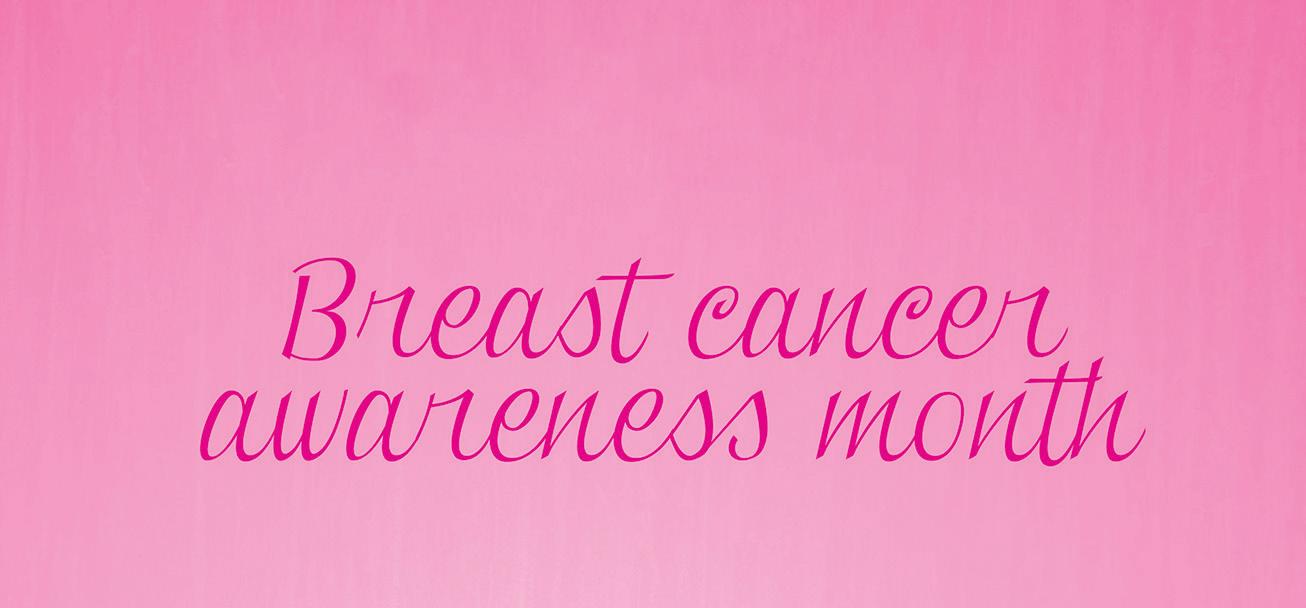
Breast cancer statistics can give the impression that each of the millions of women diagnosed with the disease is fighting the same battle, but breast cancer is something of an umbrella term. In fact, there are various types of breast cancer, including ductal carcinoma in situ, invasive ductal carcino ma, inflammatory breast cancer, and metastatic breast cancer. Learning about each type of breast cancer can help women and their families gain a greater understanding of this disease.
Ductal carcinoma in situ (DCIS)
DCIS is a non-invasive cancer that is diagnosed when abnormal cells have been found in the lining of the breast milk duct. The National Breast Cancer Foundation notes that DCIS is a highly treatable




cancer. That’s because it hasn’t spread beyond the milk duct into any surrounding breast tissue. The American Cancer Society notes that roughly 20 percent of new breast cancer cases are instances of DCIS.
Invasive ductal carcinoma (IDC)
IDC is the most common type of breast cancer. The NBCF reports that between 70 and 80 percent of all breast cancer diagnoses are instances of IDC. An IDC diagnosis means that cancer began grow ing in the milk ducts but has since spread into other parts of the breast tissue. This is why IDC is characterized as “invasive.” Though IDC can affect people, including men, of any age, the ACS notes that the majority of IDC cases are in women age 55 and older.
Inflammatory breast cancer (IBC)

The NBCF describes IBC as an “aggressive and fast growing breast cancer.” Breastcancer.org notes that IBC is rare, as data from the ACS indi cates that only about 1 percent of all breast cancers in the United States are inflammatory breast can cers. Many breast cancers begin with the formation



of a lump, but Breastcancer.org reports that IBC usually begins with reddening and swelling of the breast, and symptoms can worsen considerably within days or even hours. That underscores the importance of seeking prompt treatment should any symptoms present themselves.
Metastatic breast cancer
Metastatic breast cancer may be referred to as stage IV breast cancer. When a woman is diagnosed with metastatic breast cancer, that means the can cer has spread, or metastasized, into other parts of the body. The NBCF indicates that metastatic breast cancer usually spreads to the lungs, liver, bones, or brain. Symptoms of metastatic breast cancer vary depending on where the cancer has spread. For example, if the cancer has spread to the lungs, women may experience a chronic cough or be unable to get a full breath.
These are not the only types of breast cancer. A more extensive breakdown of the various types of breast cancer can be found at https://www.breast cancer.org/symptoms/types.
Sharon Crago Highway 281 & Main Street Stickney, SD • 605-732-4381




960 Commerce Street, Mitchell, SD • 605-996-1959
HOURS: Monday-Friday: 8AM - 5:30PM, Saturday: By Appt.
Our goal is to provide personalized care to help our clients continue to live safely in their own home. We provide care hourly, overnight, or 24/7.


4 BREAST CANCER AWARENESS OCTOBER 1, 2022
In support of October is Cancer Awareness Month! 2800 W. Havens • Mitchell, SD • 996-7704 • 1-800-952-2308 www.scottsupplyco.com
281 DINER
WesupportBreast Cancer Awareness!
SUPPORT GROUPS AND RESOURCES FOR BREAST CANCER PATIENTS
By Metro Creative

A strong support network can help breast cancer patients navigate their treatments and all of the uncertainty that can arise after a cancer diagno sis. Many women undergoing treatment for breast cancer lean on friends and family for everything from emotional support to help with household tasks and much more. Though family and friends are often invaluable to women during their battles with breast cancer, sometimes a little support from women going through the same ups and downs can be just what patients need to stay the course and overcome their disease.

According to the World Cancer Research Fund, breast cancer is the most common cancer in women across the globe. The WCRF estimates that breast cancer accounts for roughly 25 percent of all cancers in women. The World Health Organization reports that 2.3 million women were diagnosed with breast cancer in 2020. Those figures are significant, but it’s important that women recognize that five-year survival rates have improved dramatically in recent decades. In fact, the American Cancer Society notes that the five-year survival rate for localized breast cancers is 99 percent, while the rate for breast can cers that have spread outside the breast to nearby structures or lymph nodes is 86 percent.
Rising survival rates for breast cancer mean that millions of women across the globe have already survived the disease, and many such women play vital roles in support groups that help women every day.
CancerCare¨ is a national organization in the United States that is dedicated to providing free, professional support services to anyone affected by cancer. All CancerCare¨ services are provided by oncology social workers and renowned cancer experts. The following are just a few of the sup port groups cancer patients can access through www.cancercare.org.
► Breast Cancer Patient Support Group: This free, 15-week online support group is for people diagnosed with breast cancer who are currently receiving treatment. Access the group at https://www.cancercare.org/support_ groups/43-breast_cancer_patient_support_ group.




► African American Triple Negative Breast Cancer Patient Support Group:


This group is for African Americans diag nosed with triple negative breast cancer who are currently receiving treatment. The group is free and continues for 15 weeks. Access the group at https://www.cancercare.org/support_

groups/197-african_american_triple_negative_ breast_cancer_patient_support_group.



► Metastatic Breast Cancer Patient Support Group: This free, 15-week support group is for people diagnosed with stage IV metastat ic breast cancer who are currently receiving treatment. Access the group at https://www. cancercare.org/support_groups/44-metastatic_ breast_cancer_patient_support_group.
► Breast Cancer Post-Treatment Survivorship Support Group: Patients who have completed their breast cancer treatment with in the past 18 months are eligible for this free, 15-week support group. Access the group at https://www.cancercare.org/support_ groups/180-breast_cancer_post-treatment_ survivorship_support_group.
Each CancerCare¨ online support group is available exclusively to residents of the United States, including people in Puerto Rico and U.S. territories. The Canadian Cancer Society has a database that cancer patients in Canada can use to find local support services in their area. That can be accessed via the CCS Community Services Locator at www.csl.cancer.ca.
Support groups can be invaluable resources for women as they navigate breast cancer treatment.

OCTOBER 1, 2022 BREAST CANCER AWARENESS 5 24 Hour Emergency Service 605-990-5325Mitchell, SDSATISFACTION GUARANTEED! WATER • MOLD • FIRE • CARPETS • DUCTS www.thunestruevalue.com 605-996-7508 1400 North Main Street Mitchell, SD 57301 Plankinton, SD • 605-942-KIDS (5437)
The link between physical activity and cancer



 By Metro Creative
By Metro Creative





Physical activity has long been known to increase a person’s chances of living healthy well past retirement. The benefits of physical activity are numerous and include everything from a lower risk for over weight and obesity to improved mental health. Physical activity also has been linked to a lower risk for various diseases, including an assort ment of cancers.

The National Cancer Institute notes that the evidence linking physical activ ity to lower cancer risk comes from observational studies. Observational studies are a type of study in which individuals are observed or certain outcomes are measured. In observational studies examining physical activity, participants will report on their levels of physical activity and are then followed for years. During these studies, no attempt, such as treatment, is made to affect the outcome. The NCI notes that obser vational studies cannot prove a causal relationship, though they still are invaluable to cancer researchers. Such studies also illustrate the important role that physical activity can play in preventing various types of cancer.










► Bladder cancer: A 2014 meta-analysis of stud ies published in the British Journal of Cancer found that the risk of bladder cancer was 15 percent lower for individuals with the highest level of recreational or occupational physical activity than in those with the lowest level. That information may be especially valu able to individuals over 55, as the American Cancer Society notes about nine out of 10 people with bladder cancer are 55 or older.
ACTIVITY: Page 11

6 BREAST CANCER AWARENESS OCTOBER 1, 2022 Twin Dragon CHINESE RESTAURANT Mitchell, SD Interstate 90-Exit 332 605-996-5446 Credit Cards Accepted | Family Owned Business Since 1990 OPEN MON-SAT 11AM-10PM | CLOSED SUNDAYSEthan Office • 107 E. Main St. 605.227.4215 Parkston Office • 114 E. Main Street 605.928.7956 Proud to Think Pink Hours: Monday-Friday 8am-6pm 1510 S. Burr St. • Mitchell, SD 57301 605-996-1042 1-800-371-1042 001630918r1 Farmers Elevator Co. of Mt. Vernon We Buy, Sell & Store Grain “Top Prices Paid” Grinding-Mixing-Fertilizers & Services Call 236-5233 or 236-5222 Lynn Deinert, Mgr., Mt. Vernon, SD 721 N. Edmunds Mitchell, SD 605-996-8371 FROM Think Pink 605-995-5879 Come See Us at our New Location 2430 N. Main, Mitchell Store Hours: 9AM-5:30PM Mon.-Sat.
By Metro Creative





A breast cancer diagnosis can change patients’ lives in ways they never imagined. That’s especially so in the rare instances when women under 40 are diagnosed with the disease.



According to the American Cancer Society, it’s uncommon for women under 40 to receive a breast cancer diagnosis. In fact, data from the ACS indicates that only about 4 percent of all women diagnosed with breast can cer in the United States are under age 40. But 4 percent is nothing to brush aside, especially when the ACS esti mates that more than 300,000 women in the United States are diagnosed with breast cancer each year. That means roughly 12,000 women under 40 in the U.S. will be diagnosed with breast cancer this year, and many of those women will understandably express concerns about cancer recurrence in the years to come.


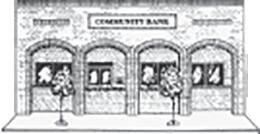





The medical experts at Johns Hop kins Medicine note that learning to cope with fears of breast cancer recur rence is an important part of the recov ery process. Those same experts note that various lifestyle changes can help women regain their health, strength and optimism and quell any fears they have about cancer recurrence.
► Take care of yourself, both emo tionally and physically. Johns Hopkins Medicine urges breast cancer survivors to put their own needs first some times. That can be difficult for younger
breast cancer survivors with children at home, but prioritizing their own emotional well-being can help women overcome their fears of recurrence. Support groups can connect women with fellow breast cancer survivors, and women should not hesitate to dis cuss any fears or concerns with their doctors. It’s also vital that women prioritize their physical well-being. Routine exercise and a healthy diet can help women reduce stress and maintain a healthy weight, which can reduce risk for recurrence.
► Stay on top of screenings and vaccinations. Another way to reduce the risk of cancer recurrence is to stay up-to-date on screenings, flu shots and vaccinations. Annual physicals and screenings for cardiovas cular conditions like high cho lesterol and diabetes can help women stay on a healthy path forward.
► Monitor vitamin D lev els. Johns Hopkins Medi cine notes that the Nurses Health Study found a link between low levels of vitamin D and breast cancer incidence. It remains unknown if vitamin D sup plements can lower risk of breast cancer recurrence, but main


taining sufficient levels of vitamin D can promote overall health. Women can speak with their physicians about vitamin D and which supplements to consider. In addition, spending 20 minutes per day in the sunshine while wearing sunscreen with a minimum SPF of 30 can help women reach rec ommended levels of vitamin D. Cancer recurrence is a significant concern for survivors. However, various strategies can help women reduce their risk for recurrence and help them regain their opti mism for the future.

OCTOBER 1, 2022 BREAST CANCER AWARENESS 7 605-770-9509 | Mitchell, SD Vilhauer Painting Interior & Exterior Free Estimates 605-928-3833 155West1stSt. •DimockSD www.dimockdairy.com Mon-Fri 8:00am-6:30pm Saturday 8:00am-4:00 pm A Good Bank In A Good Community • Checking Services • Savings • CD’S • IRA’S • Mortgages • Vehicle & Personal Loans 118 N Main St | Avon, SD | 605-286-3213 COMMUNITY BANK OF AVON 1010 N Main St, Mitchell, SD 57301 605-996-7556 HOW TO REDUCE RISK OF BREAST CANCER RECURRENCE

































































































































































































































































































































































































































































































































































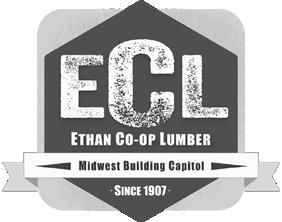



8 BREAST CANCER AWARENESS OCTOBER 1, 2022 www.bankwest-sd.bank |605-995-5059 1920 N. Sanborn Blvd. &1200 E. SpruceSt. in Mitchell Member FDIC mitchellroofingsd.com I DON’T JUST STAND BEHIND MY WORK, I STAND ON IT! 605-996-8648 PROUD TO SUPPORT BREAST CANCER AWARENESS PROUD TO SUPPORT BREAST CANCER AWARENESS P.H. Rasmussen, M.D • D.M. Holum, M.D. • M.D. Gerlach M.D. Gina Hawkins, PAC • Sarah Goral, PAC 818 W. Havens Mitchell, SD 57301 996-7526 Appointments WE ARE STRONGER TOGETHER. Before You Build, Build a Relationship Ag Buildings • Residential • Commercial Property BIG or small we do it ALL from start to finish! 117 West Ash Street • Ethan, SD 573-8426 • 605-227-4224 • ethancooplumber.com
The value of activity-driven fundraisers
By Metro Creative



Fundraising is vital to the survival of many nonprofit organizations. Charity watchdog groups like Charity Navigator suggest nonprofits should aspire to spend less than 10 percent of their bud gets on fundraising. That can be a tall task and underscores the need for charities to find creative, cost-effective ways to raise funds.
Nonprofit organizations raise funds in vari ous ways. Some organizations partner with local businesses and receive a portion of the proceeds participating establishments earn on certain days, while other organizations may cold call prospec tive donors during times of the year when giving to charity tends to increase, such as the holiday season. Activity-driven fundraisers are another popular way for nonprofit organizations to raise funds, and these endeavors can be highly effective.




What are activity-driven fundraisers?





Activity-driven fundraisers focus on an engag ing activity that encourages supporters to actively participate in an effort to raise funds. The Ice Bucket Challenge is one of the more notable activ ity-driven fundraisers in recent years. Participants in the challenge would pour a bucket of ice water over their heads or the head of another person, and then challenge or nominate another person to follow suit. Participants also would urge dona tions to support research into amyotrophic lateral sclerosis, an incurable motor neuron disease also known as Lou Gehrig’s disease. Additional exam ples of activity-driven fundraisers are runs and walks in which participants solicit donations
from supporters that increase with each mile they walk or run. The American Cancer Society’s Breast Cancer Awareness 5K walk and fun run is one popular activity-driven fundraiser that annually attracts sizable numbers of participants and donors.





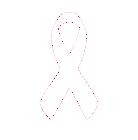




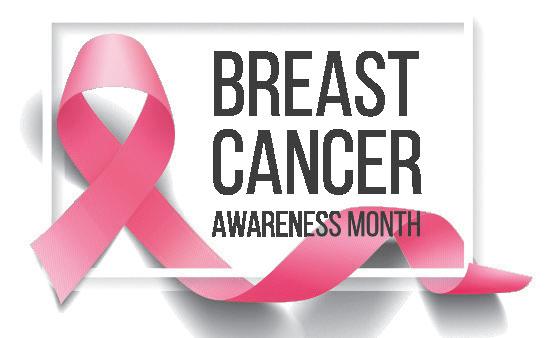


Are activity-driven fundraisers effective?



The sheer volume of activity-driven fundrais ers makes it more difficult to gauge the success of these events. However, a recent study from researchers at Carnegie Mellon University found
that people are inclined to contribute more when the experience is painful and labor-intensive. That suggests that activity-driven fundraisers like charity runs can be highly effective and lucrative ways to raise money. Indeed, various estimates suggest the Ice Bucket Challenge raised more than $220 million worldwide.


Nonprofit organizations raise funds in myriad ways. Activity-driven fundraisers are among the more engaging, and often successful, ways to raise money for a good cause.

OCTOBER 1, 2022 BREAST CANCER AWARENESS 9 1004 South Ben Street • PO Box 89 • Parkston, SD 57366 ASE Master certified / ASE Master Diesel certified, DOT Inspection certified, Air Conditioner certified. ALL DIESELS ALL DIAGNOSTICS ALL SEMIS INFRAME MAJOR OVERHAULS 605-928-7335 • 1-888-595-6717 GOD BLESS ALL CANCER SURVIVORS OR THOSE THAT ARE DEALING WITH IT PRESENTLY. CONTINUED PRAYERS TO ALL! 001779904r1 During October a portion of our proceeds will be donated to BCRF Susan Tjarks 605.630.3422 GotchaCovered.com/ Eastern-SD cindy@theexperience.com • cindysellsmitchell.com 28 Years of EXPERIENCE Cindy Hockett 605-770-3164⊲ LIST • SHOW • SOLD Registered Representative for NYLIFE Securities LLC, Member FINRA/SIPC David L. Jorgenson, LUTCF® Financial Services Professional New York Life Insurance Company 115 W 12th Ave PO Box 296 Mitchell, SD 57301 Phone: (605) 996-4444 Cell: (605) 999-2239 djorgenson@ft.newyorklife.com www.newyorklife.com Ins. Lic. #CA 0H53351 BROOKS OIL CO., INC. LOCALLY OWNED & OPERATED FOR OVER 40 YEARS! 605-248-2310 Letcher, SD The Original Serving Mitchel & Surrounding Areas for Over 55 Years! New Construction, Pre-finishing of Woodwork & Repainting Interior & Exterior Jim Gramm Call (605) 996-1243 A-1 Gas & Go JAMIE WREN 605-286-3500 West Highway 50 Avon, SD
GENETICS
From Page 3
child. When an egg is fertilized by sperm, it creates one cell. That one cell then divides many times, eventually becoming a baby. Since all of the cells that eventually form come from that first cell, the inherited gene mutation is present in every cell. ThatÕs why itÕs pos sible for gene mutations that lead to cancer to be passed down from generation to generation.
How do people know if a family cancer syndrome affects their families?
The ACS notes that cancer is a common disease that roughly one in three people in the United States will develop during their lifetimes. So even if two family members develop the same type of cancer, that does not necessarily mean a family cancer syndrome is present. However, the ACS reports that cer tain factors make it a family can cer syndrome more likely. Those factors include:
► Many cases of the same type of cancer, especially if it is an uncommon or rare type of cancer

► Cancers occurring at younger ages than usual. Age is a risk factor for many types of cancer, but the average age of diagnosis tends to be in adulthood. Many young peo ple in the same family being diag nosed with a cancer that is most often diagnosed in older adults is a potential indicator of a family cancer syndrome.


► More than one type of can cer in a single person, such as a woman with both breast and ovar ian cancer









► Cancers occurring in both of a pair of organs, such as both eyes, both kidneys, or both breasts





► More than one childhood can cer in siblings, such as sarcoma in both a brother and a sister

► Cancer occurring in the sex not usually affected, such as breast cancer in a man


Cancer occurring in many gen erations, such as in a grandfather, father and son


The relationship between genet ics and cancer is complicated. More information is available at www.cancer.org.
Support the Fight



OCTOBER 1, 2022 Food Liquor Casino 1524WHavens MitCHeLL 605-996-8844 CALL FOR SPECIALS! 605-996-RUGS (7847) VOTED BEST OF MITCHELL 9 YEARS IN A ROW LOCALLY OWNED SERVING MITCHELL AND SURROUNDING AREA PROUD TO THINK PINK 708 East Kay Avenue Mitchell, South Dakota 57301 Phone 605-996-2186 DakotaFamilyChiro.com Work Hard, Play Hard... We Got Your Back! 200 N. Main St, Mitchell, SD 57301 605-996-SOLD(7653) CraneRealty.net @996Sold Mitchell’s Longest Running Real Estate Office 400 N. Ohlman St., Mitchell, SD 605-996-9175 • www.muellerlumber.com www.shafermemorials.com
1023 N. Main, Mitchell, SD 5 blocks N. of Corn Palace 605-996-3115 1-800-464-3115
► Breast cancer: A meta-analysis published in the European Journal of Cancer in 2016 found that the most physically active women had a 12 to 21 percent lower risk of breast cancer than those who were the least physically active. Similarly, addi tional studies have linked physical activity after menopause to a lower risk of breast cancer. That’s important to know, as the NCI indicates that doc tors most often diagnose breast cancer in women between the ages of 55 and 64.









► Esophageal cancer: Cohort studies are used by researchers to investigate the causes of disease and to establish links between risk factors and health outcomes. A 2014 meta-analysis of nine cohort studies and 15 case-control studies, which compare patients who have a disease or outcome of interest to patients who do not have the disease or outcome, found that the individuals who were the most physically active had a 21 percent lower of risk of esophageal adenocarcinoma than those who were the least physically active. Such findings are significant, as the Mayo Clinic reports that adeno carcinoma is the most common form of esophageal cancer in the United States, while the NCI notes the condition is not curable.
► Kidney (renal cell) cancer: A pooled analysis of more than one million individuals published in JAMA Internal Medicine in 2016 found that lei sure-time physical activity was linked to a 23 per cent reduced risk of kidney cancer. Leisure-time physical activities can include anything from jog ging to dancing to gardening.
Physical activity benefits the body in myriad ways and has been linked to significantly lower risks for various cancers.

605-996-2133 805 W. Havens Mitchell








OCTOBER 1, 2022 BREAST CANCER AWARENESS 11 STAND TOGETHER FOR A CURE 210 N Lawler | Mitchell, SD | 605-996-6565 730 N Kimball, Mitchell, SD 57301 WE ARE STRONGER TOGETHER ROLLING HILLS VETERINARY CLINIC 102 1st Street NE Wessington Springs 605-539-1040 Deanna Hetland 605-770-8456 Email: dhetland@fischerrounds.com www.frarealestate.com Broker Associate REALTOR
“No one else can give you more!” Mitchell Across the Street From County Fair 996-6900www.montgomeryfurniture.net WE SUPPORT PINK
ACTIVITY From Page 5

12 BREAST CANCER AWARENESS OCTOBER 1, 2022











 Jones
Jones











 By Metro Creative
By Metro Creative







































































































































































































































































